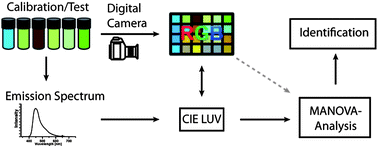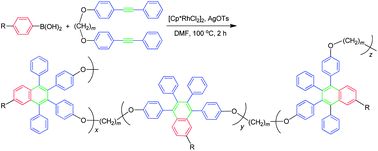This review covers recent developments of a few potential biomedical
applications conjugated polymers (CPs). CPs have a variety of properties
that lend themselves to non-viral delivery systems of SiRNA, DNA
plasmids and proteins. Cationic conjugated polymers are generally used
to form nanoparticles with negatively charged biomolecules through
electrostatic interactions. These nanoparticles have enhanced cell
permeability and are easily monitored by fluorescence microscopy.
Some examples of CPs that are discussed in this review: poly(fluorene-co-phenylene) (PFP), poly(p-phenylenevinylene) (PPV), poly(p-phenyleneethynylene) (PPE), polydiacetylene (PDA), and polythiophene (PT)




































